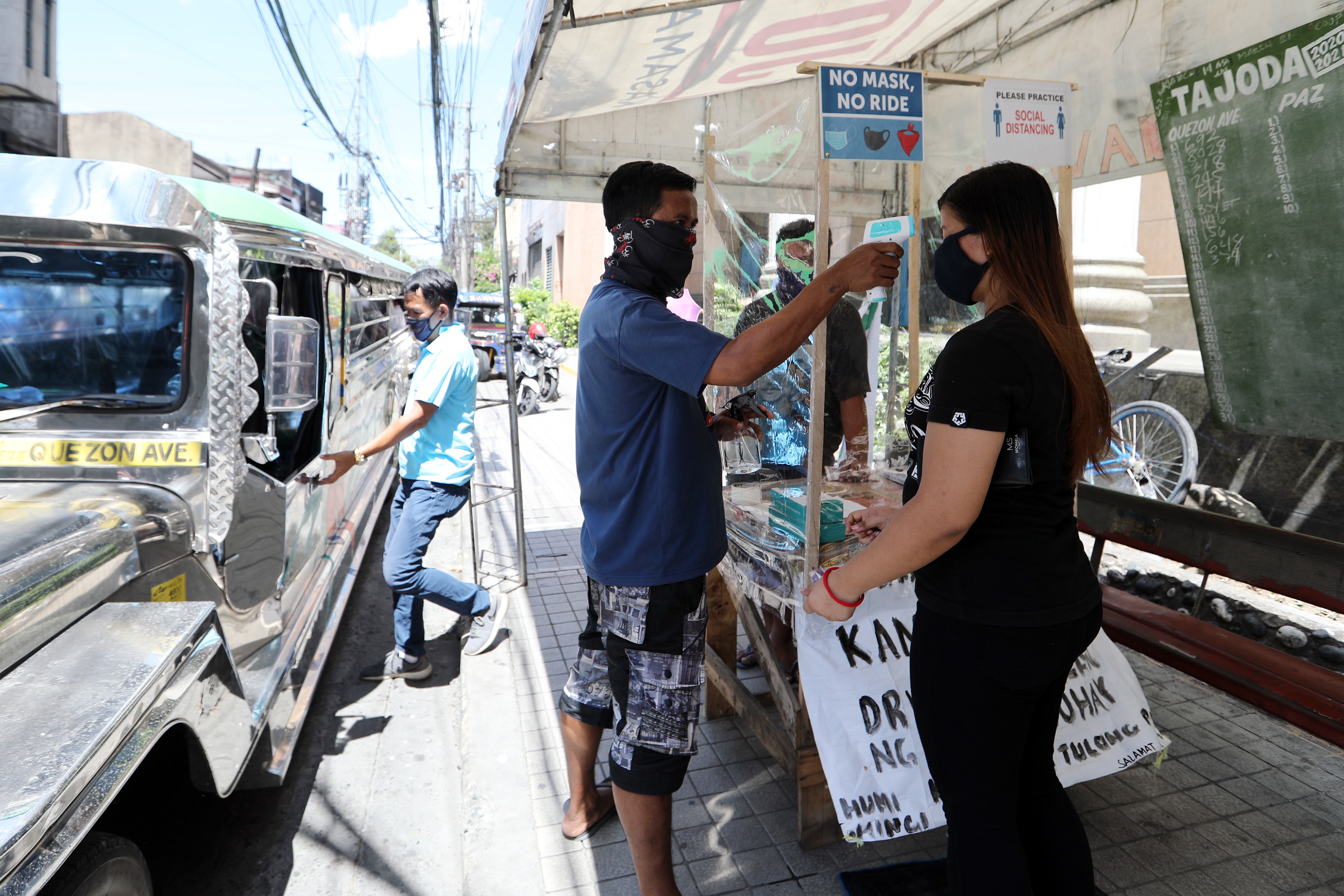Headline
Filipinos should adapt to ‘changed’ environment amid pandemic

FILE: TEMP CHECK. The temperature of a female passenger is being checked on Friday (July 3, 2020) at the jeepney terminal along Agno Extension and Araneta Avenue in Quezon City as part of health protocol being implemented in public utility vehicles (PUVs) under the “new normal”.
The passenger jeepney plies the Quezon Avenue-Sta Mesa route. (PNA photo by Joey O. Razon)
MANILA – As the country observes national disaster resilience month, Filipinos should adapt to a “changed” environment under the new normal brought by the coronavirus pandemic.
National Disaster Risk Reduction and Management Council (NDRRMC) spokesperson Mark Cashean Timbal said disaster resiliency also refers to the ability to survive threats caused by pandemics.
“Our national goal of resilience covers not just hazards but pandemics as well. We are in the ‘new normal’ now and we must skillfully adapt to this changing environment to protect ourselves while doing our work as productive citizens; to work together to overcome the challenges of Covid-19 and other disasters,” he said.
Timbal said the support and cooperation of everyone are crucial in defeating these challenges.
“We continue to build preparedness and resilience. With the support and cooperation of our people, we can surmount these challenges,” he added.
Executive Order No. 29 signed on June 28, 2017, by President Rodrigo Duterte on June 28, 2017 mandates the observance of national disaster resilience month nationwide every July through activities related to the building of disaster resilience covering the four thematic areas: prevention and mitigation, preparedness, response and rehabilitation, and recovery.
Through disaster resilience month, the public would know the importance of understanding disaster risks and governance, investing in disaster risk reduction for resilience, enhancing preparedness for effective response, and implementing “Build Back Better” in rehabilitation and recovery.





















